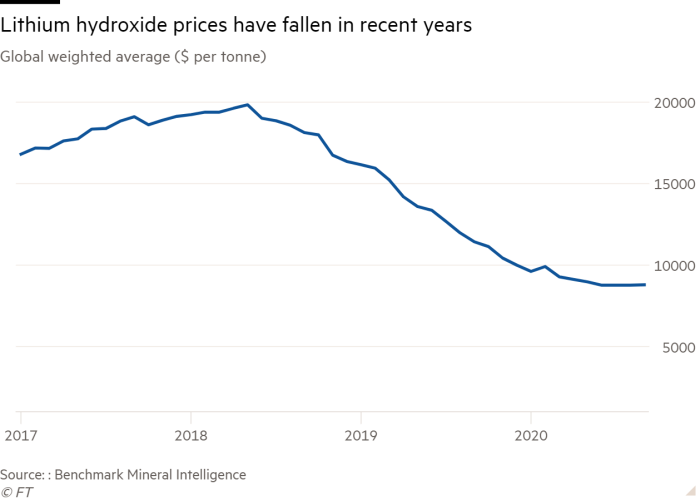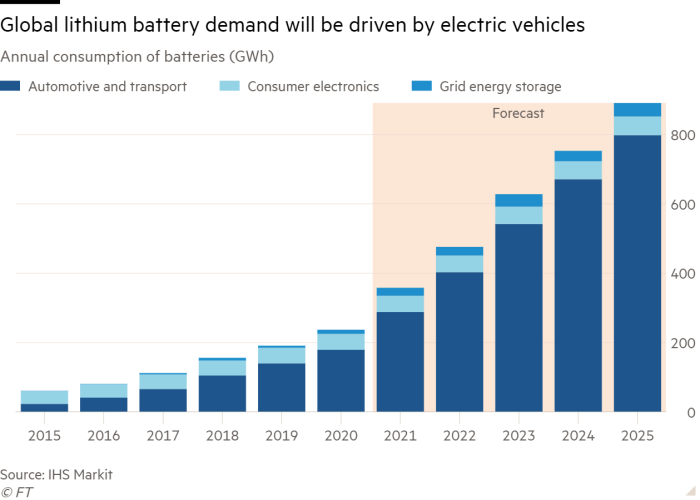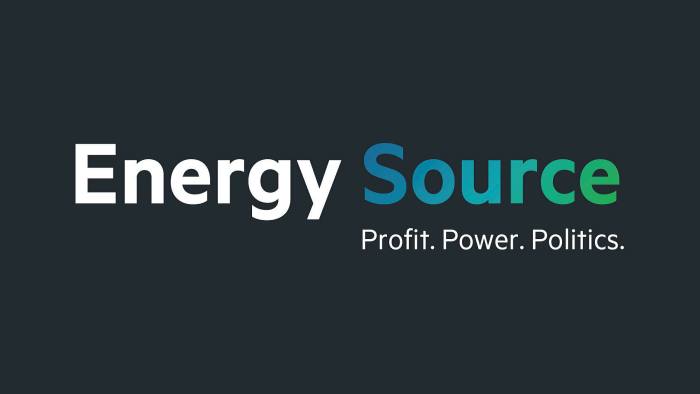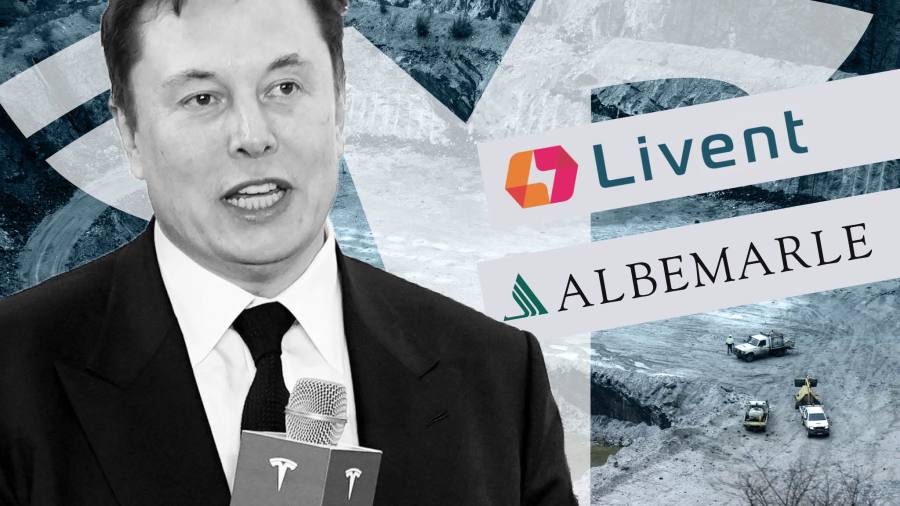When Tesla held its socially distanced “battery day” last month at an outdoor parking lot in California, it invited executives from the two big US lithium companies, Livent and Albemarle.
As they sat in their allotted Model 3s watching Elon Musk on their in-car screens, he dropped a bombshell: the electric car maker was becoming a competitor.
Tesla, Mr Musk said, had acquired the rights to a 10,000-acre plot in Nevada where it planned to extract the metal using simple table salt, and would build a lithium refinery to supply a new factory in Texas. The next day Albemarle and Livent lost a combined $1.7bn in market value as their share prices plunged.
But industry insiders and observers remain sceptical that the car group can pose a serious competitive threat to established lithium producers. They say Tesla’s plan is unlikely to bear fruit for years and is instead designed to put pressure on the industry, which is dominated by five companies, to ramp up production.
“He’s put the cat among the pigeons,” said Simon Moores, managing director at consultancy Benchmark Mineral Intelligence. “The message is, ‘we don’t trust you to scale quickly enough for our needs so we’ll do it ourselves’. It’s a slight slap in the face of the upstream mining companies.”
Tesla, which did not respond to requests for comment, is seeking to more than halve the cost of its batteries in a push to produce a $25,000 electric car that can compete with mass-market mid-range petrol vehicles.

To reach an ambitious annual production target of 20m cars by 2030, which would require 3 terawatt hours of batteries a year, the lithium industry would need to grow more than eightfold just to supply Tesla, according to analysts at Citigroup.
Energy consultancy Wood Mackenzie says $50bn needs to be invested in lithium over the next 15 years to meet battery demand if the world is to meet the targets of the Paris climate accord.
But lithium producers have struggled to expand in the face of three years of falling prices. The price of lithium hydroxide, the type Tesla uses, has fallen 20 per cent over the past year, according to Benchmark Mineral Intelligence.
Without further investment Tesla risks being short of lithium and facing a potential price surge over the next decade.
In August low prices prompted Albemarle to temporarily shut its lithium facility in Silver Springs, Nevada. The company has also slowed down spending on a lithium hydroxide refinery in Western Australia.
To bolster new supply Tesla signed an agreement last month with North Carolina-focused mining group Piedmont Lithium to buy five years of their output starting in 2022.
That contract will help Piedmont access finance to bring the mine into production, according to Keith Phillips, its chief executive.
“One of the issues Tesla faces is there’s a duopoly outside of China in lithium hydroxide of Albemarle and Livent,” he said. “But neither of them are growing their upstream capacities, whereas Tesla are growing their requirements every year. If they can help enable others to be successful it brings more material to the market which is good for them.”
Mr Musk said Tesla could lower the cost of lithium production by 33 per cent by producing the lithium from Piedmont and elsewhere at its new refinery in Texas.

But it will meet only a fraction of Tesla’s needs, according to Joe Lowry, a lithium consultant and industry veteran.
He also has doubts over the plan to mine lithium from clay deposits in Nevada — a process Mr Musk summarised at the Battery Day as: “We take a chunk of dirt out the ground, remove the lithium and put the chunk of dirt back where it was.”
“I don’t believe that Tesla is going to be successful in supplying a high percentage of their own lithium requirements,” Mr Lowry said. “I think they’ll struggle like everyone else who enters this industry — it’s not easy to make high quality lithium chemicals, Elon knows that. Was it just a ruse to bring the lithium companies to the table?”
Kent Masters, chief executive of Albemarle, said the company had looked at extracting lithium from clay in Nevada — an untested process — but had concluded it was not cost-competitive with its production in Chile and Australia.
“Our view is that they [clays] are uneconomical given pricing today and how we forecast pricing and the access to the other resources that we have,” he said on a recent call with analysts.
Tesla would also need federal permits to begin mining in Nevada, itself a process that can take years, according to another lithium executive.
Mr Moores believes the true aim of the Battery Day statement was to kickstart the building of a US-based supply chain for lithium. China refines and processes 80 per cent of the world’s battery materials and also dominates production of battery components such as cathodes and anodes.
Twice weekly newsletter

Energy is the world’s indispensable business and Energy Source is its newsletter. Every Tuesday and Thursday, direct to your inbox, Energy Source brings you essential news, forward-thinking analysis and insider intelligence. Sign up here.
Cutting out China’s role would allow Tesla to integrate supplies completely from basic raw materials to batteries, he said, in a throwback to Henry Ford, who bought up rubber plantations in the Amazon to supply the material used in tyres.
“The sway of industrial power is now swinging back to the US,” he added. “We’ve gone from North America . . . making hardly any batteries and not producing any chemicals and raw materials to having an integrated Tesla battery hub.”




